-
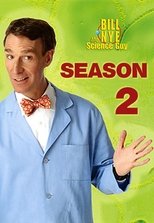
-
-
Bill Nye The Science Guy : Season 2
-
Air date: 18 Feb '94 - 20 episodesBill Nye the Science Guy is an educational television program that originally aired from September 10, 1993 to June 20, 1998, hosted by William "Bill" Nye and produced by Buena Vista Television. The show aired on PBS Kids and was also syndicated to local stations. Each of the 100 episodes aims to teach a specific topic in science to a preteen audience. The show is frequently used in schools as an education medium, and it still airs on some PBS stations for this reason. Created by comedian Ross Shafer and based on sketches on KING-TV's sketch program Almost Live!, Bill Nye the Science Guy was produced by Disney Educational Productions and KCTS-TV of Seattle. Bill Nye the Science Guy won nineteen Emmy Awards during its run.
-
-
List of Episodes (20)
-
Bill Nye The Science Guy (1993)
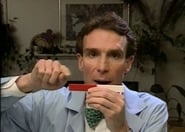
-
1. Magnetism
18 Feb '94
-
Bill Nye The Science Guy (1993)
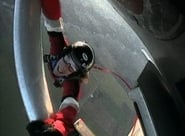
-
2. Wind
25 Feb '94
-
Bill Nye The Science Guy (1993)
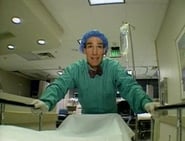
-
3. Blood & Circulation
04 Mar '94It's time for a heart-to-heart talk about blood and circulation with Bill Nye the Science Guy. Your blood is your bud. Without blood, your skin would dry up and fall off, your internal organs would die, and your brain would be kaput. Blood gives every cell in your body the food and oxygen it needs to survive. Blood also cleans up after our cells by carrying away waste. Blood even protects your body from disease. What more could you ask from a friend? Blood patrols your entire body.
-
Bill Nye The Science Guy (1993)

-
4. Chemical Reactions
11 Mar '94
-
Bill Nye The Science Guy (1993)
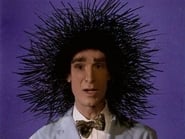
-
5. Static Electricity
18 Mar '94
-
Bill Nye The Science Guy (1993)

-
6. Food Web
25 Mar '94Feeling a little hungry? Then grab a snack and watch Bill Nye the Science Guy's episode on the Food Web. When it comes to eating, all living things depend on other living things. Take a chicken sandwich, for example. The bread came from plants. So did the lettuce and tomatoes. The cheese was made from milk, which came from a cow. To make milk, the cow had to stay alive by eating grass. The meat came from a chicken who once ate seed, and maybe the occasional bug. The animals that helped
-
Bill Nye The Science Guy (1993)

-
7. Light Optics
10 Sep '94They're on your refrigerator, they're inside your computer, and you're even standing on one right now. They're magnets, and forget about being repulsed. Bill Nye the Science Guy's ""Magnetism"" episode is totally attractive. All magnets have certain things in common. All magnets have two poles - north and south. You could take a magnet and break it into pieces and all of the pieces would have north and south poles. Ever play with two magnets? If you hold them with one magnet's north
-
Bill Nye The Science Guy (1993)
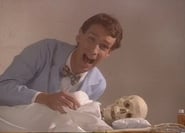
-
8. Bones and Muscles
17 Sep '94Some answers, my friend, do in fact, blow in the wind. A cool breeze is great on a hot summer day. A cold winter wind can chill you until you can't stop shivering. Where does all that wind come from? It starts with the Sun. Energy from the Sun warms the Earth and the atmosphere, the air, above it. As the world turns into darkness each night, the atmosphere cools off. The molecules in a mass of warm air are more spread out than the molecules of air in a cold air mass. So cold air is
-
Bill Nye The Science Guy (1993)

-
9. Oceanography
24 Sep '94It's time for a heart-to-heart talk about blood and circulation with Bill Nye the Science Guy. Your blood is your bud. Without blood, your skin would dry up and fall off, your internal organs would die, and your brain would be kaput. Blood gives every cell in your body the food and oxygen it needs to survive. Blood also cleans up after our cells by carrying away waste. Blood even protects your body from disease. What more could you ask from a friend? Blood patrols your entire body.
-
Bill Nye The Science Guy (1993)
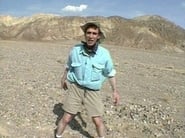
-
10. Heat
01 Oct '94Bill is practically exploding with excitement about the ""Chemical Reactions"" show. Every single thing around you is made of chemicals. Plants, rocks, computers, food, and you are bunches of chemicals. All chemicals are built with elements, the 109 different symbols on the Periodic Table. Different combinations of elements make different chemicals. Lots of times, chemicals just sit around, but sometimes, when certain chemicals get together, they react. Chemical reactions take the
-
Bill Nye The Science Guy (1993)
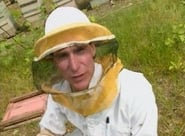
-
11. Insects
08 Oct '94Bill's all charged up about the ""Static Electricity"" show. It happens to all of us. You're causally walking along, maybe dragging your feet a little, when you reach out to shake a friend's hand and - ZAP! Both you and your friend get shocked. The spark is static electricity, a buildup of charged electrons. Electrons are a part of all atoms, the building blocks of all stuff, including you and me. All electrons have a negative charge. Negatively charged electrons push away from other
-
Bill Nye The Science Guy (1993)
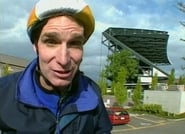
-
12. Balance
15 Oct '94Feeling a little hungry? Then grab a snack and watch Bill Nye the Science Guy's episode on the Food Web. When it comes to eating, all living things depend on other living things. Take a chicken sandwich, for example. The bread came from plants. So did the lettuce and tomatoes. The cheese was made from milk, which came from a cow. To make milk, the cow had to stay alive by eating grass. The meat came from a chicken who once ate seed, and maybe the occasional bug. The animals that helped
-
Bill Nye The Science Guy (1993)

-
13. The Sun
22 Oct '94Don't stay in the dark - Bill Nye will help you absorb the science of light optics. Light is energy that normally moves in a straight line, but often something gets in the way. When light runs into something, three things can happen - the light can bounce off, it can go through, or it can be absorbed. Often all three things happen at the same time. Light bounces off mirrors. You see yourself in a mirror when light bounces off your face, into the mirror, and then into your eyes. Light
-
Bill Nye The Science Guy (1993)
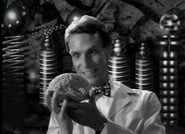
-
14. Brain
29 Oct '94Bill Nye looks at how the brain controls the body and stores information
-
Bill Nye The Science Guy (1993)
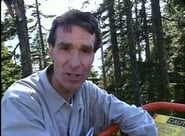
-
15. Forests
05 Nov '94Surf's up! Get the current information as Bill Nye explains why oceans are salty and explores the ocean currents. Go with the flow of ocean currents with Bill Nye the Science Guy. Most of the Earth is covered with water - we're talking 71% of the entire Earth, and most of that water is in oceans. It depends how you count, but you can say that there are five oceans on Earth - the Atlantic, the Pacific, the Indian, the Arctic, and the Antarctic. They are all connected into one World Ocean by
-
Bill Nye The Science Guy (1993)
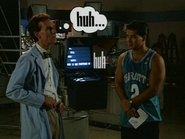
-
16. Communication
12 Nov '94Things sure are heating up at Nye Labs. Snow cones, flowers, hot dogs, people -- everything is made of molecules. No matter what they're in, solid, liquid, or gas, molecules are always moving, even if just a little bit. The speed of the molecules depends on their temperature. Cold things have slow-moving molecules, while hot things have fast-moving molecules. In fact, temperature is really a measurement of molecule speed. For a cold thing to get warm, its molecules have to speed up. Heat moves
-
Bill Nye The Science Guy (1993)

-
17. Momentum
19 Nov '94Bill Nye's not here to bug you - he just wants to tell you about insects. Do you know when you're looking at an insect? All insects have six legs, three body segments, antennae, and an exoskeleton. Insects don't have bones. Instead, they have hard shells called exoskeletons. Like a little suit of armor, an exoskeleton protects the insect's body and also keeps it from drying out. Although people call any crawling critter with an exoskeleton a ""bug"", the ""true bugs"" are insects that have
-
Bill Nye The Science Guy (1993)
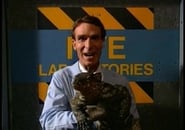
-
18. Reptiles
26 Nov '94Bill Nye's going to use the force to pull you into the world of balance. A force is a push or a pull. You can feel a force when someone pushes you. You can use a force to pull a door shut. Anyone can make forces by pushing and pulling, and you don't need to be Luke Skywalker to use a force. In a game of tug-of-war, if the pull of your team is the same as the pull of the other team, the forces are equal. The two teams are in balance, and the rope doesn't budge. Things are in balance when forces
-
Bill Nye The Science Guy (1993)

-
19. Atmosphere
03 Dec '94The Sun is huge. It's bigger than huge. It's so big that 1.3 million Earths would fit inside a hollowed-out Sun. It's really far away, too - about 150 million kilometers (93 million miles) Even at that distance the Sun affects everything on Earth. All the energy we have comes, or once came from, the Sun. That includes energy to light a lamp, energy to kick a soccer ball, and energy in batteries that play your personal stereo. We're talking about nearly all of the energy. There's a little
-
Bill Nye The Science Guy (1993)

-
20. Respiration
07 Jan '95Bill Nye looks at how the brain controls the body and stores information
-



























